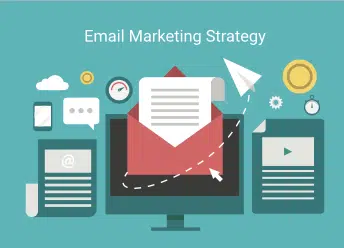
When you run into a problem with a product you just purchased, you naturally want an immediate solution!
You don’t want to wait around on hold or get stuck in a never-ending email thread with a customer service representative.
When you’re unable to get that answer or solution promptly, you think negatively of the company. On the one hand, as much as we know that it’s not the fault of the customer service representatives —they’re handling each call as best as they can! — we still become frustrated when our problem goes unsolved.
On the other hand, businesses need to make their customers happy, especially when they are seeking support.
To provide customers with the answers they need in a timely manner, companies are turning to self-service tools now more than ever before.
Customer Self-Service: What Is It & How Does It Work?
Customer self-service refers to the concept of customers seeking out and finding the solution to the problem, without requiring the assistance of a customer service representative.
Rather than reaching out to a support hotline or dedicated email address, customers can use these tools to find the specific answer to their problems with the brand’s products or services. A study by Nuance Enterprise found that 67% of customers prefer using self-service options over speaking with a company or customer service representative.
Customers also prefer the self-service method of support for three main reasons:
- Speed
- Accuracy
- Convenience
Self-Service Tools Offer Answers Fast
Remember, no one enjoys waiting on hold while the dishwasher is broken or the CRM system erases years of vital data. Customers need answers to their problems ASAP!
By using a self-service system, customers can search for their respective issues and immediately find the answer, along with the steps to take to rectify the situation.
They don’t have to jump through hoops to speak to a representative, deal with never-ending phone menus, or wait for an email response. It all happens on their timeline.
Customer Self-Service Options Offer Accurate Answers
Even with comprehensive training, there’s always the possibility of human error when speaking with a customer representative.
Customer self-service tools guarantee that customers receive accurate information and solutions. This reduces customer frustration along with repeat calls and ensures a positive experience for your team and the customer alike.
The information provided via self-service tools can be as simple or as in-depth as necessary to solve the problem or describe the feature. No matter how it’s delivered, you can have peace of mind knowing your customers are receiving the correct solutions every time.
Convenience is Key
Not all customer problems occur during normal business hours.
What happens when a customer experiences a situation at midnight and needs to get in touch with your team for the answer? The customer is either stuck waiting around for a response or can’t contact your team until morning. Neither situation leads to a positive customer service encounter.
And it’s important to consider that not all of your customers have access to the same devices. One customer may prefer to find information on their phone, while others resort to their desktop or laptop computers.
With self-service customer tools, your audience can find the information they need—no matter which device they choose to use or the time of day.
Bonus Benefit: Happier Employees and Reduced Overhead Expenses
Although not entirely a benefit for your customers, self-service tools lead to happier employees and reduced overhead expenses.
When you implement self-service customer tools, your team doesn’t have to spend the majority of the day answering customer concerns or directing customer calls to the right department. Your customers already have all the information they need!
And, if customers do decide to call, they’ll already have a background of information available about their problem. This benefits both the customer and the employee handling the problem.
Additionally, by not needing to staff an entire call center, your company will enjoy reduced overhead expenses in the long run!
5 Common Types of Customer Self-Service Tools
When you’re ready to make the switch to customer self-service tools, consider using these five common options.
1. FAQ Pages
Including an FAQ page on your website is the most common type of customer self-service tool.
Begin by compiling the most frequently asked customer questions, concerns, or complaints. Then, create specific and accurate answers. It’s that simple!
Answers can also direct users to more in-depth content such as blog posts or product videos to help them further solve their problems.
2. Knowledge Bases
Designed similarly to an FAQ page, a knowledge base is a self-service resource where customers can find everything they want to know about your product or service.
Knowledge bases include information about product/service features, technical troubleshooting, account information, and so much more. Software like HelpScout assists brands in building out this resource in a user-friendly manner.
3. Community Forums
Another form of self-service customer support comes in the form of customers helping other customers!
Through community forums, customers can share their experiences with a particular problem and use the solutions of other users who experienced the same predicament.
Customer community forums can also be used to discuss specific product features, updated services, and more. Foster a supportive community and you’ll enjoy improved customer satisfaction and overall lifetime value!
4. Product Training Resources
Depending on how technical or high-value your products/services are, providing ample training resources will help customers troubleshoot a problem before reaching out to your customer support team.
These resources can be in the form of training manuals, product videos, or exclusive blog posts.
5. Automated Chatbots
Instead of relying on a customer service agent to answer a live chat, program a chatbot to respond to customer questions.
Chatbots can answer questions, direct customers to the right information, and set-up appointments or alert a customer service agent if the problem warrants it. By implementing an automated chatbot, customers can receive the information they were looking for instantly.
What Self-Service Tools Will Your Team Implement?
From chatbots to FAQ pages, the sky’s the limit! Take advantage of self-service tools for improved customer satisfaction and support.












